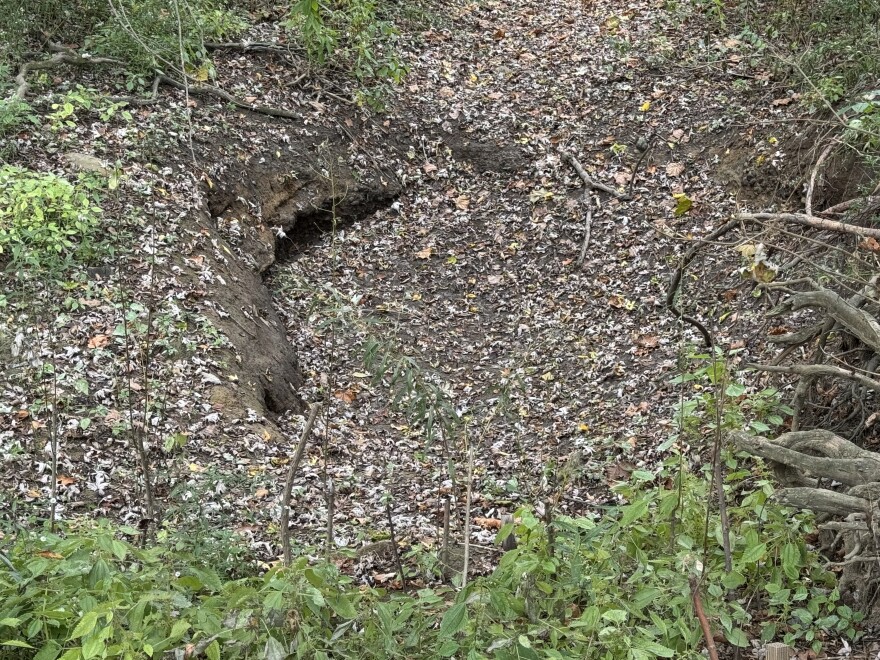Englewood MetroPark’s 40-acre wetland — once even nicknamed “Englewood Lake” because of plentiful water and aquatic species — ran into a major issue: It was no longer wet.
That’s what led Five Rivers MetroParks staff to coordinate a months-long project last spring to restore the wetland once more. The aim is to see the return of its wetland species.
The wetland has maintained water thanks to a levee, sometimes referred to as a berm. But the levee containing the water had three erosion points, creating channels for water to escape.
“If you have a low spot, that's where you're going to get the water. And as this area floods and the water recedes, it finds those low spots and it creates a lot of force. It keeps digging,” said Kevin Ptacek, regional conservation manager.
Historic rain events causing the erosion and drought conditions were a recipe for water loss.
“Instead of water draining out of the wetland at the design point, it was fissuring out of the wetland in these breaks in this berm,” Ptacek said.
“So instead of a slow leaky bathtub, water was essentially being poured out of the wetlands and we weren't really seeing a lot of residence time of water in the wetlands between larger rain events.”

It took about 10 to 15 years for the degradation to take hold, he said.
The repairs started in December 2024 to reinforce these breaches. They used 40 tons of soil, clay and rocks as backfill. They finished by scattering native plant seeds over the area.
“Vegetation is really key for (the) long-term success in this berm because our native vegetation creates a lot of structure with its roots to really help hold soil in place,” Ptacek said.
Not only does vegetation reinforce the levee, it can slow down water runoff. Ptacek said the wetland keeps the nearby Stillwater River in check.
“It pulls quite a bit of that flood water out of the main channel. So it does a lot to protect folks who… live by Stillwater, (and) protects them from flooding in these large rain events that we've been seeing,” he said.
One animal returning to the wetlands are birds. Wetlands are key to birds’ migratory routes as they provide water, food and shelter all in one stop. It was known as a top birder destination for that reason.
After staff completed the restoration earlier this year, native and migratory birds that used to be regular visitors have been spotted there again.
“During the spring migration period, folks were seeing species that they hadn't seen here in a decade. So seeing the wildlife response is really a great way to measure the success of this project,” Ptacek said.
Some of the birds recorded since the restoration include ducks, American coots and common pintail. Overall, 258 species have been reported.
But their work isn't done, Ptacek said. Their next goal is to replace the berm for a more permanent solution. He said they’ll use levy money approved for the park system last year to fund that project.
“Conservation is at the heart of our mission. And being able to steward over these really unique habitat types and these natural features that make Dayton so unique is really a privilege.”



